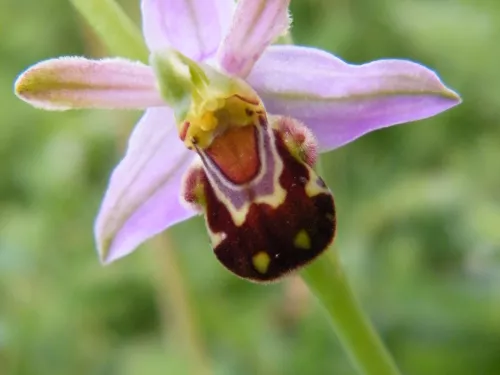Basking shark
This gentle giant is the largest shark in UK seas, reaching up to 12m in length. There's no need to fear them though, they only eat plankton!
This gentle giant is the largest shark in UK seas, reaching up to 12m in length. There's no need to fear them though, they only eat plankton!
This common hoverfly can be recognised by the dark markings behind its head, which often resemble the Batman logo.
Have you ever seen those dark red jelly blobs whilst rockpooling? These incredible creatures are beadlet anemones! They live attached to rocks all around the coast of the UK, the base of their body acting like a sucker to keep them in one place until the tide goes out.
The bearded tit is an unmistakable cinnamon-coloured bird of reedbeds in the south, east and north-west of England. Males actually sport a black 'moustache', rather than a beard!
Beautiful demoiselle’s are, well, beautiful! Often confused for a dragonfly, these giants of the damselfly world are hard to miss with their metallic blue and green colours.
Beavers are the engineers of the animal world, creating wetlands where wildlife can thrive. After a 400-year absence, beavers are back in Britain!

The Bechstein's bat is a very rare bat that lives in woodland and roosts in old woodpecker holes or tree crevices. Like other bats, the females form 'maternity colonies' to have their pups.

The bee orchid is a sneaky mimic - the flower’s velvety lip looks like a female bee. Males fly in to try to mate with it and end up pollinating the flower. Sadly, the right bee species doesn’t live here, so this orchid is self-pollinated in the UK.
One of our largest and most impressive solitary wasps, the bee wolf digs a nest in sandy spots and hunts honey bees.
Bell heather is our most familiar heather. In summer, it carpets our heaths, woods and coasts with purple-pink flowers that attract all kinds of nectar-loving insects.
A winter visitor, the well-travelled Bewick's swan is the smallest of our swans. It has more black on its yellow-and-black bill than the whooper swan. Look out for it around Eastern England and the Severn Estuary.
Bilberries appear in summer and early autumn and are often turned into jams, pies and sauces...